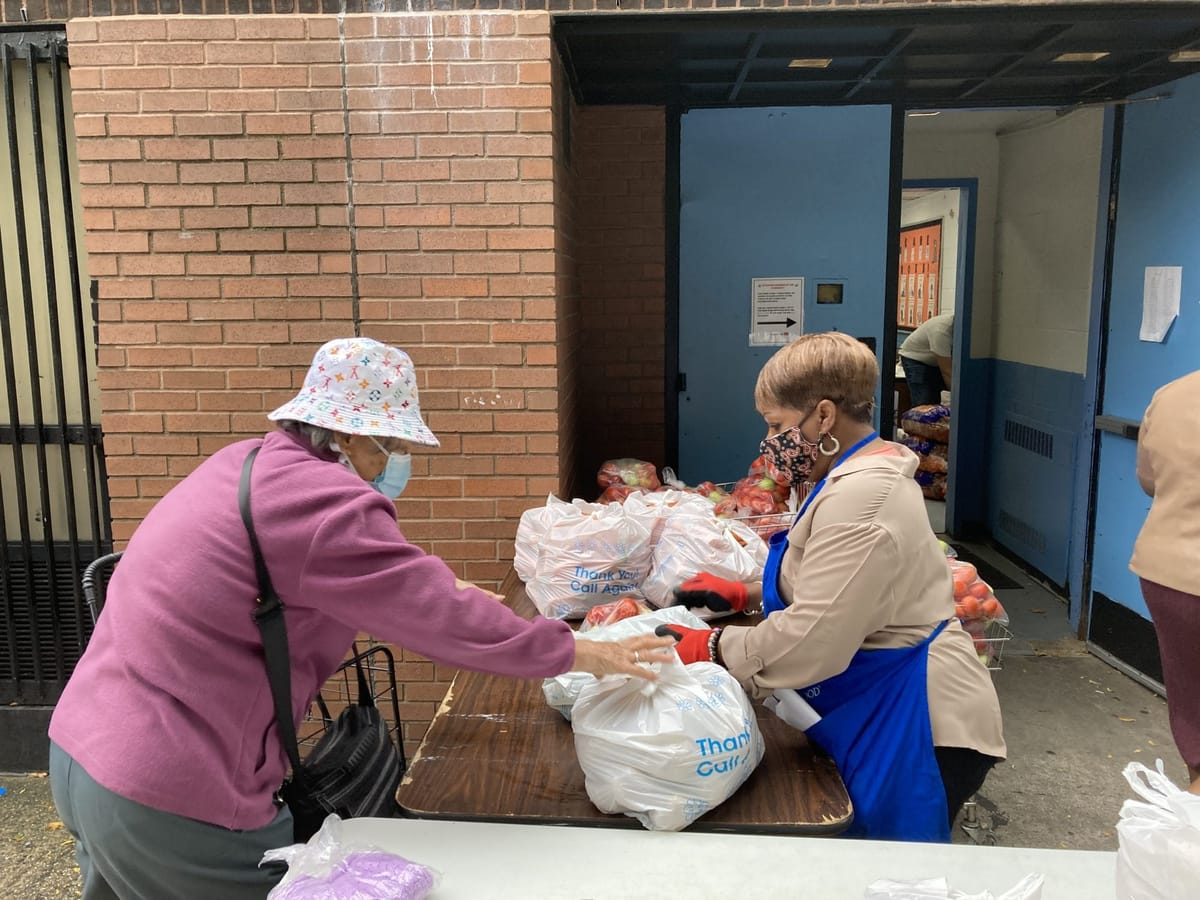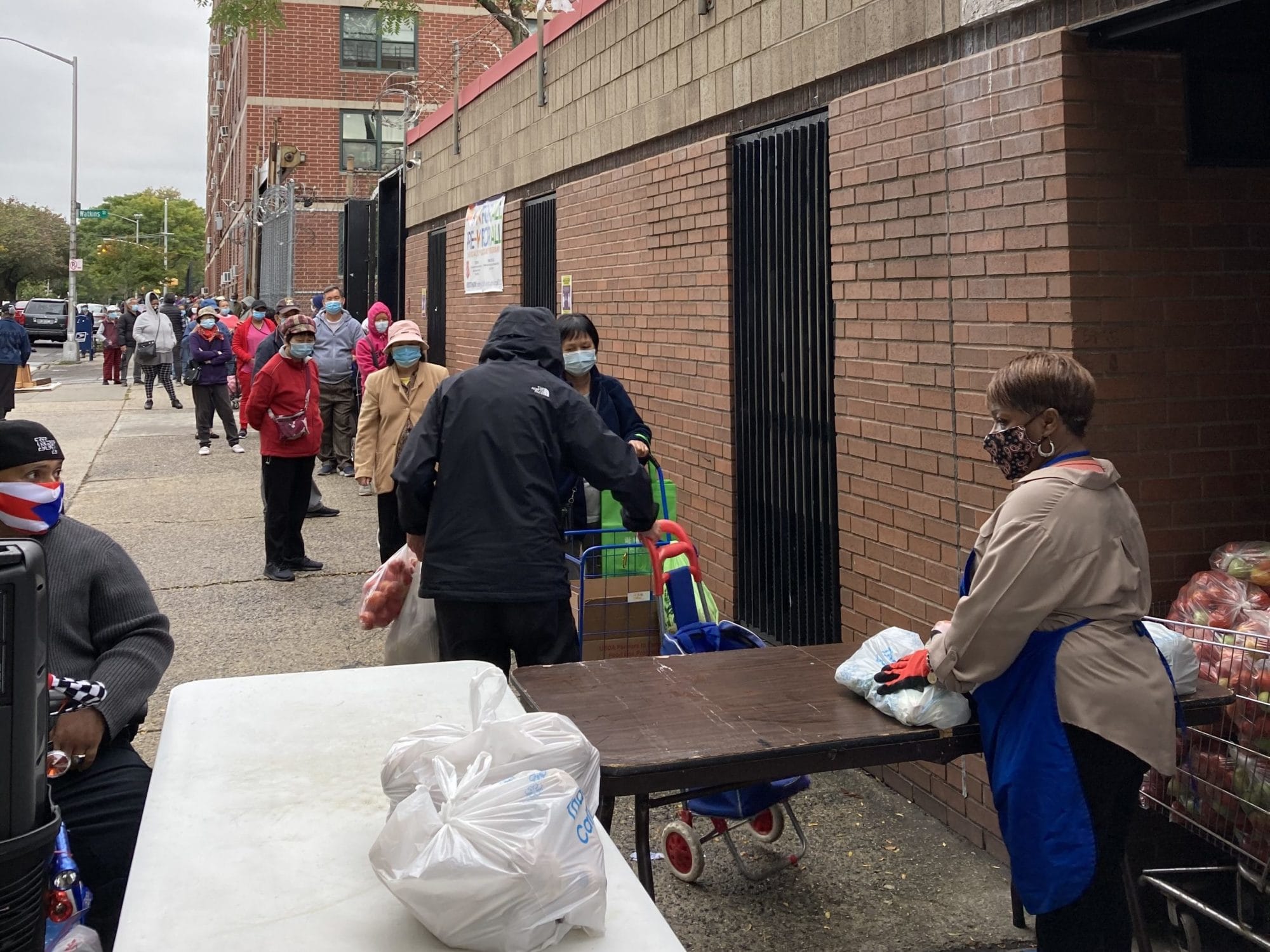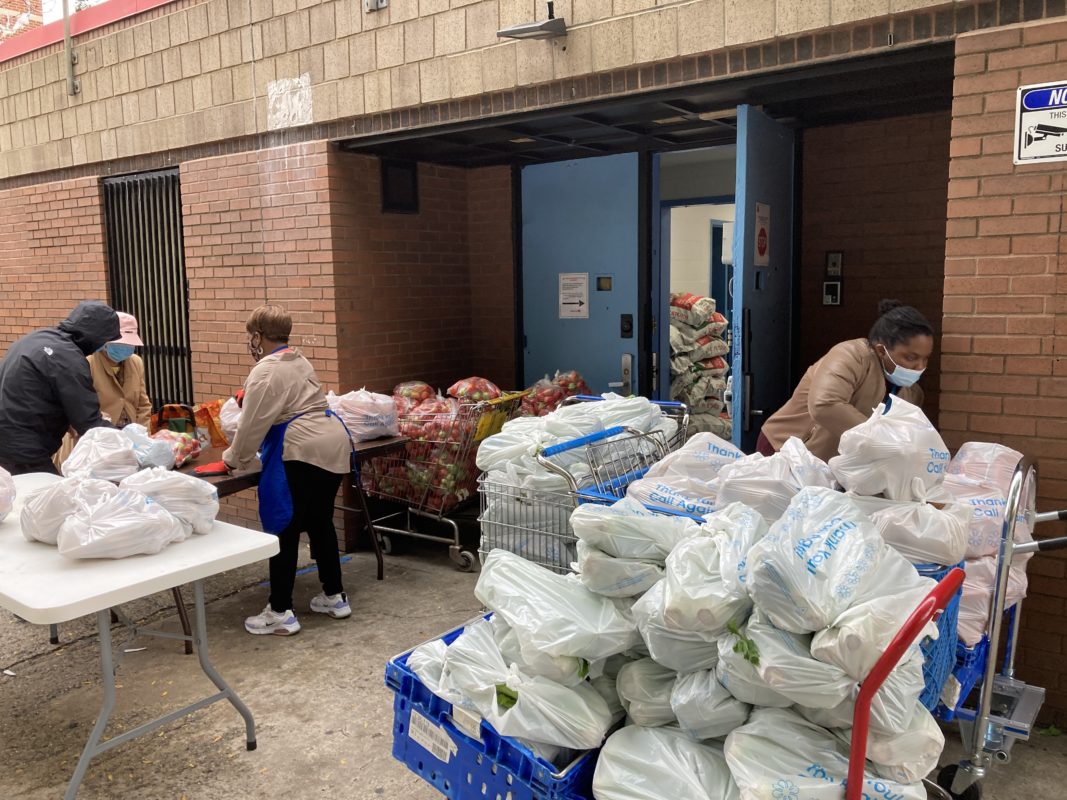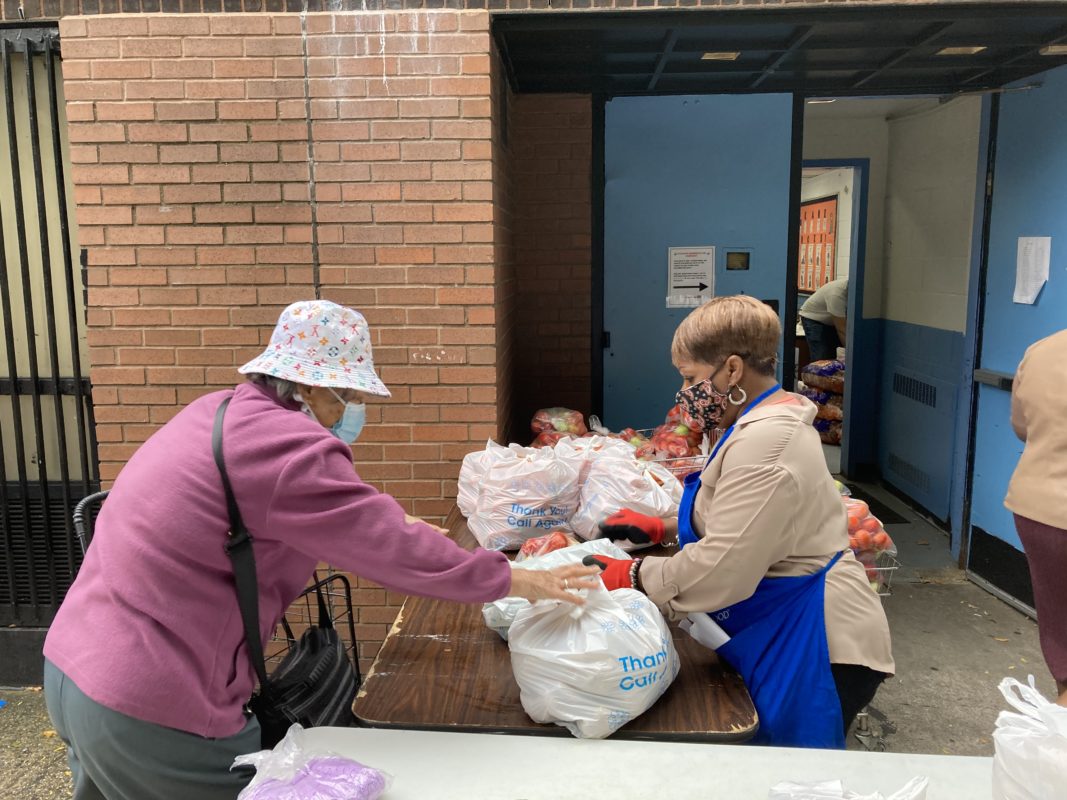Fighting Hunger in Brooklyn: One Food Pantry At A Time


Over 100 people lined up outside the Salvation Army Brooklyn Brownsville Corps Community Center on a recent Friday as workers handed out plastic bags filled with fresh produce. Nearly one-third of Brownsville’s residents are food insecure, and the COVID-19 pandemic is exacerbating the issue.
Before the pandemic, Charlene Williams-Mahon, 33, the organization’s social ministries coordinator, said that the community center typically handed out around 1,000 t-shirt sized bags of food in a month. She says that number is now closer to 3,000.
Williams-Mahon and Kim Dennis, 60, a receptionist at the community center who also volunteers, distributed bags stuffed with potatoes, carrots, celery, and tomatoes for over an hour until everyone was served.

Horatio Burke, 54, said he started to come to the community center for food distribution days regularly in April after losing his job as a dishwasher at Alameda, a bar in Greenpoint.
“I would die from hunger,” Burke said, without food from the community center.
Burke is just one of the current 158,000 Brooklynites without a job, up from 42,000 in February. Although Brooklyn’s unemployment rate was 14.1% in September, one analysis using data from the U.S. Bureau of Labor Statistics notes that unemployment in parts of Brownsville during the same period may have been as high as 35%.
Even after serving the entire line, Williams-Mahon and Dennis knew more people would trickle in throughout the day.
“We’re serving the entire community here,” Dennis said.
The Salvation Army community center is one of 58 organizations in Brownsville running food pantries or soup kitchens. They are almost as ubiquitous as supermarkets – there are just 83 total retail food stores in the area. According to the Hunter College New York City Food Policy Center, access to healthy food remains a challenge in part because there is one supermarket for every 15 bodegas in Brownsville.

According to Williams-Mahon, ninety-nine percent of the community center’s food comes through grants from the city. The rest comes from donations from organizations like City Harvest or through the Salvation Army’s emergency funds in case of a shortage. However, Williams-Mahon noted that hadn’t happened recently.
Food distribution at the community center either happens on a ‘surplus day’ or a ‘pantry day.’ Surplus days are scheduled for the first and third Friday of the month, whereas pantry days happen once a month and are scheduled by a color-coded group. On a surplus day, bags of fresh produce designed for a three-person household are given with the hopes of it lasting for at least a week. However, a pantry day may include meat, milk, juice, and other items designed to last an entire month.
A member of the pink group, for example, received food on October 6, and their next pantry day is November 10. Williams-Mahon says the main focus of hers is to sign residents up for pantry days to organize distribution efforts better.
The line on this particular Friday had several residents who are now regulars. Carlyle Andre, 51, said she has been coming for a year now because her disability check is not enough for both food and rent. Gloria Christian, 74, said she’s been coming since 2013 because it helps her financially.
Some come to get food for themselves as well as pass it on to others. Dorothy Fagan, 74, has been coming to the community center for almost three years. But she will also turn to other organizations such as the Brownsville Community Culinary Center for food.
“What I don’t need, I’ll give to someone else. [It] never goes to waste,” said Fagan.
For seniors in Brownsville, the Salvation Army community center provides access to healthy food that they might otherwise struggle to afford on a fixed income. Some of them live just down the block. Williams-Mahon says they will look out their windows throughout the week to see if anything is being distributed.
“They always have their eye out for what we have,” said Williams-Mahon. “We have an open relationship with the community.”
Even as parts of Brooklyn see a rise in positive COVID-19 infection rates, the Salvation Army community center is prepared to continue serving those in need. Hungry residents going through hard times or looking for food that isn’t easily accessible can continue relying on the community center as a lifeline.
“Once we have it, we’re gonna give it out,” said Williams-Mahon.




